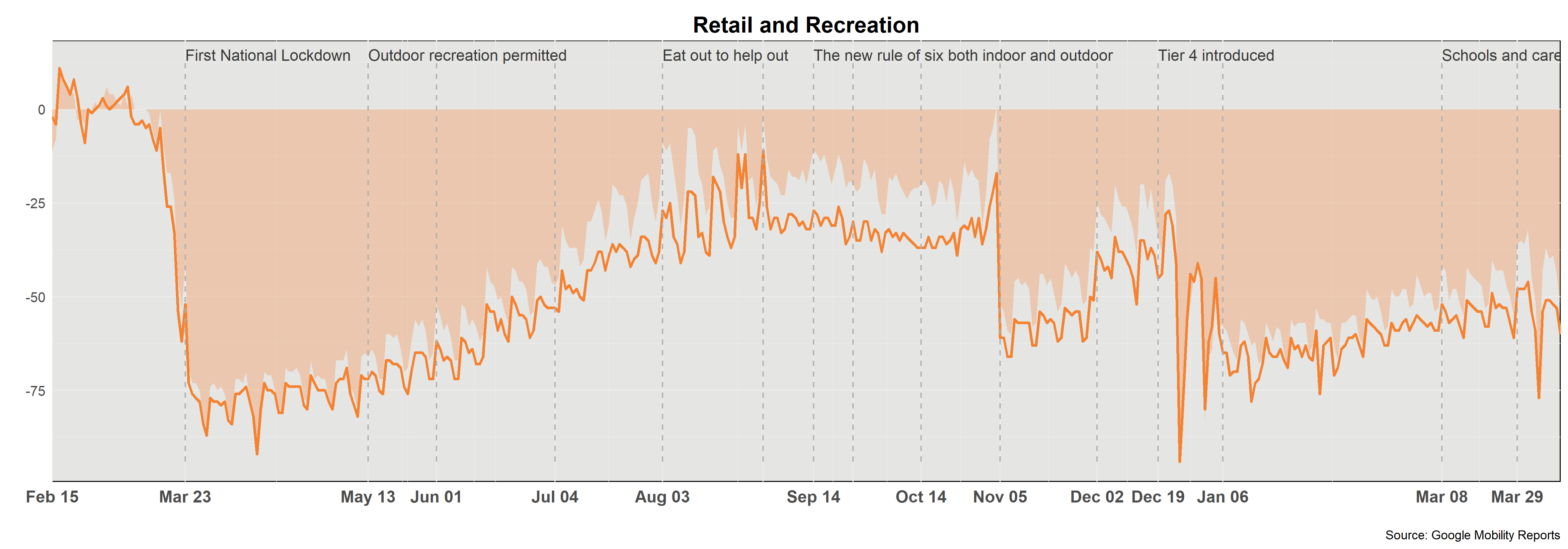Rapidly responding to new spatial modelling needs
The Rapid Assistance in Modelling the Pandemic (RAMP) initiative was set up by The Royal Society to mobilise the UK’s wider scientific modelling community and bring a range of expertise from different disciplines across academia and the private sector.
The ongoing project, which aims to model the COVID-19 pandemic and help guide the UK’s response, is made up of various strands, including an Urban Analytics task team which is led by the CDRC’s Professor Mark Birkin.
The team, which includes researchers from the Universities of Leeds, Exeter, Cambridge and UCL, plus non-academic partners, have been building a data-driven model of disease spread to enable policy makers to understand the potential impact of different COVID-related policies.
This data science, cross-disciplinary approach is creating new models and insights that can be used to support existing research groups and inform the work of the Government’s scientific advisors. It has enhanced modelling capacity to create clearer lockdown exit strategies, as well as allowing for more robust and comprehensive predictions that would not be possible otherwise.
Forming the Emergent Alliance – a powerful data alliance to aid economic recovery after COVID-19
The Emergent Alliance is a not-for-profit collaboration of large organisations, small businesses, institutes and individuals who share knowledge, data and skills to inform decision making on regional and global economic challenges related to COVID-19.
The CDRC’s Professor Mark Birkin worked alongside consortium-leader Rolls-Royce to develop the concept, and the Leeds Institute for Data Analytics (LIDA) is one of a group of founding members, including IBM, Microsoft and Google Cloud.
As the lead academic institution within the Alliance, LIDA provides members with secure infrastructure, scientific expertise and access to global academic research networks.
Since it was launched in April 2020, the Emergent Alliance has grown to include over 65 organisations. Its combined ecosystem has the resources and power to solve some of the biggest challenges facing a post COVID-19 world.
Two examples of the application of this work are the finding that rail is still safer than road (with caveats) and the Job Finder Machine, a tool to help regional re-skilling and redeployment.
Understanding isolation and exclusion in a post-social distancing COVID-19 world
CDRC Data Scientist Intern, Rosalind Martin, working with Professor Susan Grant-Muller, Professor Alison Heppenstall and Dr Vikki Houlden from the University of Leeds, and Professor Rachel Franklin from the University of Newcastle, has produced a dashboard that identifies geographical areas which might experience increased isolation and exclusion as we leave the COVID-19 pandemic and lockdowns.
SPENSER (a synthetic population) was used to identify individuals and households at risk from five COVID-19 restrictions: shielding, school closures, limited household interaction, furlough and limited to local area, along with households at risk from unique combinations of these five scenarios. This has been translated onto a dashboard which displays additive counts of household level impacts at the Middle Layer Super Output Area (MSOA) level.
Dashboards with mapping have shown to be an important tool for understanding how health impacts of COVID-19 are distributed, and this same logic applies to how lockdown restrictions combine spatially. Although patterns of household-level impacts are difficult to see from these maps, this work has explored how to use proxy data in order to identify individual- and household-level impacts from COVID-19 restrictions, and begun to unpack the complexities of combining data at the household level. This is something that must continue going forward as academics and policy makers continue to face the challenges that accompany understanding the social and spatial impacts of the emergence from lockdown.

